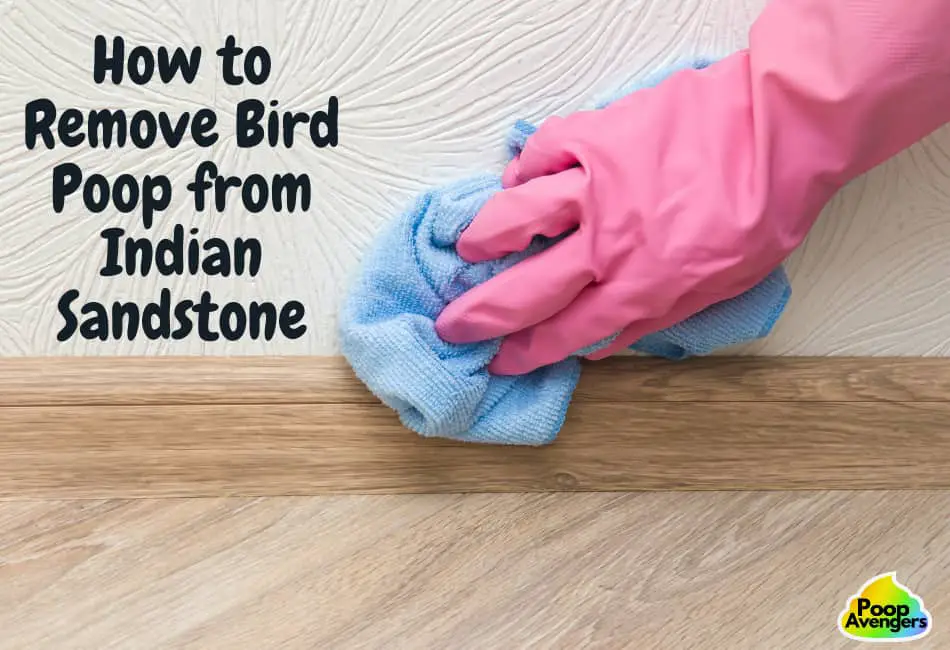If you’ve ever had the unfortunate experience of discovering a smear of poop on your wall, you’re not alone.
Whether it’s a mischievous toddler on the loose or a pet who’s found a unique way to express their dissatisfaction, dealing with such a mess can be both perplexing and nauseating.
But, as unpleasant as it is, it’s crucial to tackle the issue promptly and properly, not just for the sake of hygiene but also to preserve the integrity of your wall surfaces.
While it may seem daunting, cleaning poop off walls doesn’t have to be a nightmare. With the right knowledge, tools, and a bit of elbow grease, you can restore your walls to their original, poop-free glory.
This blog post will guide you through effective methods and tips for different wall surfaces. So, let’s roll up our sleeves and dive into the nitty-gritty of poop-cleaning.
Understanding the Situation
Before you start scrubbing away, it’s essential to understand the situation you’re dealing with. The first step is identifying the source of the poop. Is it human or pet feces?
This knowledge is crucial as it can affect the cleaning method and the safety precautions you need to take. For instance, some pet feces might carry parasites that are harmful to humans.
The next step is assessing your wall surface. Painted walls, wallpapered surfaces, and tile or ceramic walls have their own sensitivities and require different cleaning methods.
It’s important not to rush into cleaning without considering your wall’s material, as using the wrong method could lead to permanent damage or discoloration.
Getting Ready for the Cleanup
Understanding your scenario means it’s time to gear up for the cleanup. Start by assembling all the necessary cleaning supplies based on the type of wall surface.
If you’re dealing with painted walls, you’ll need dish soap, warm water, or a magic eraser. A homemade wallpaper paste remover or non-abrasive cleaning wipes should be suitable for wallpaper.
And for tile or ceramic walls, a baking soda and water mixture or a mild all-purpose cleaner will do the job.
Protection is key during this process. If needed, arm yourself with gloves, an apron, and a mask to protect against the smell.
Also, prepare a disposable scraper or paper towels to remove any large debris or residue before you commence deep cleaning.
Lastly, keep a trash bag within reach for easy disposal of waste materials. With these preparations in place, you’re now ready to tackle the mess effectively.
Cleaning Poop off Painted Walls
1. Dish Soap and Warm Water Solution
A simple dish soap and warm water solution can be very effective in cleaning painted walls. Here’s a step-by-step guide:
- Mix a few drops of dish soap with warm water in a bucket.
- The dish soap will help break down the poop, while the warm water will make it easier to wipe away.
- Next, dip a sponge or soft cloth into the solution and wring it out to remove excess liquid.
- You want it damp, not soaking wet, to avoid water damage to your wall.
- Gently wipe the poop-stained area, applying light pressure as needed.
- Make sure to work from outside the stain towards the center to prevent spreading it further.
- Once you’ve removed the stain, rinse the wall with a clean sponge or cloth dampened with water.
- This will ensure all soap residue is removed.
- Finally, dry the wall thoroughly with a clean towel or allow it to air dry.
2. Magic Eraser
If the dish soap and warm water aren’t cutting it, a Magic Eraser can be a great alternative. Follow these steps:
- Start by dampening a Magic Eraser with water.
- You don’t need any additional cleaning products for this method.
- Gently rub the poop stain on the painted wall using the Magic Eraser. Apply moderate pressure, but be cautious not to scrub too hard as it could damage the paint.
- Once the stain is gone, clean the wall with a damp cloth to remove any residue from the Magic Eraser.
- Lastly, dry the wall completely. Leaving walls damp can lead to mold and mildew growth.
Pro Tip: Remember, when using either of these methods, always test the cleaning solution on an inconspicuous area first to ensure it won’t damage or discolor your paint.
Cleaning Poop off Wallpaper
1. Homemade Wallpaper Paste Remover
If your wallpaper is stained with poop, a homemade wallpaper paste remover can be an effective cleaning solution. Here’s how to use it:
- Mix equal parts of warm water and vinegar in a spray bottle.
- This solution will help break down the stain without damaging your wallpaper.
- Spray the solution onto the affected area and let it sit for a few minutes.
- The vinegar and warm water mixture needs time to work magic and loosen the poop stain.
- After waiting, use a clean, damp sponge or cloth to rub the poop stain in circular motions gently. Be gentle to avoid tearing the wallpaper.
- Wipe the wall with a dry cloth once the stain is gone.
- This will remove any remaining solution and prevent excessive moisture from soaking into the wallpaper, which could cause damage.
2. Non-Abrasive Cleaning Wipes
Non-abrasive cleaning wipes can also be an excellent tool for cleaning wallpaper. Here’s how to use them:
- Choose non-abrasive cleaning wipes that are safe for wallpaper surfaces.
- Always read the packaging to ensure they’re suitable for your type of wallpaper.
- Gently wipe the stained area, following the directions provided on the packaging.
- Avoid scrubbing too hard, as it can damage the wallpaper.
- After cleaning, use a clean, dry cloth to remove any residue and moisture from the wallpaper.
- Leaving your wallpaper damp can lead to problems like mold and mildew growth.
Cleaning Tile or Ceramic Walls
1. Baking Soda and Water Paste
A baking soda paste can be a great solution if you’re dealing with a poop stain on tile or ceramic walls. Here’s how to use it:
- Mix baking soda with just enough water to form a thick paste.
- This paste will be a mild abrasive to help scrub the stain away.
- Apply the paste directly onto the poop stain using a sponge or cloth.
- Make sure to cover the entire stain.
- Let the paste sit for a few minutes to break down the stain.
- The baking soda will work its magic during this time.
- After waiting, gently scrub the area with a soft brush or non-abrasive sponge.
- Be cautious not to scrub too hard, as you could scratch the tile or ceramic surface.
- Once the stain is removed, rinse the wall with clean water. This will ensure all baking soda residue is washed away.
- Dry the wall thoroughly with a clean towel or let it air dry.
- This will prevent water spots from forming.
2. Mild All-Purpose Clean
A mild all-purpose cleaner can effectively clean poop stains from tile or ceramic walls. Here’s how to use it:
- First, dilute your all-purpose cleaner according to the instructions on the bottle. Some cleaners may be too strong to use directly on tile or ceramic surfaces.
- Apply the cleaner onto the poop stain and let it sit briefly.
- This gives the cleaner time to penetrate the stain.
- Use a sponge or cloth to scrub the stained area gently.
- Always scrub in a circular motion to avoid scratching the surface.
- Rinse the wall with clean water to remove any remaining cleaner.
- Leaving cleaner on your wall could cause discoloration over time.
Additional Tips and Considerations
For a successful cleanup, here are some additional tips and considerations to bear in mind:
Test First
Before applying any cleaning solution or method to a large area, testing it on a small, hidden section of the wall is always recommended.
This will help you determine if the cleaning agent will cause discoloration or damage the wall surface. If you notice any adverse reactions, it’s best to try a different cleaning method.
Ventilation
When cleaning, especially with chemical agents, ensure you work in a well-ventilated area. This is to avoid inhaling potentially harmful fumes from the cleaning agents.
Open windows or turn on fans to keep air circulating. Also, consider wearing a mask for added protection.
Professional Help
If the stain persists after trying these methods or the wall material is delicate or requires specialized cleaning, don’t hesitate to seek professional help.
Professional cleaning services have the expertise and the right equipment to deal with stubborn stains and delicate materials without causing further damage.
Disposal
Remember to dispose of any waste materials properly. Used gloves, sponges, cloths or paper towels should be placed in a plastic bag, sealed tightly, and thrown away in a covered trash bin.
Safety
Lastly, never forget about safety. Apart from wearing appropriate protective gear like gloves and masks, ensure to keep children and pets away from the cleaning area until it is completely clean and dry.
Following these tips and considerations, you can ensure a safe and effective cleanup of poop stains from your wall surfaces.
Conclusion
Dealing with poop stains on your walls can be challenging, but with the right approach and tools, it’s certainly manageable. We’ve explored various cleaning methods tailored for different wall surfaces — painted walls, wallpaper, and tile or ceramic surfaces.
From using a simple dish soap and warm water solution or a magic eraser on painted walls to a homemade wallpaper paste remover or non-abrasive cleaning wipes for wallpapers, and a baking soda and water paste or a mild all-purpose cleaner for tiles or ceramics, there’s a suitable method for every scenario.
The key is acting swiftly and choosing the most appropriate method that aligns with your situation. Always remember to test any cleaning solution on a small, hidden section first to avoid causing any damage or discoloration.
And if you’re dealing with stubborn stains or delicate materials, seeking professional help is wise. Maintaining cleanliness in our living spaces is paramount, not just for aesthetic purposes but also for health reasons.
Moreover, preserving the integrity of your wall surfaces can significantly contribute to the longevity and appeal of your home’s interior.
So, don’t shy away from these minor inconveniences. With the right techniques, you’ll be well-equipped to handle them effectively and ensure a clean, vibrant living environment.

